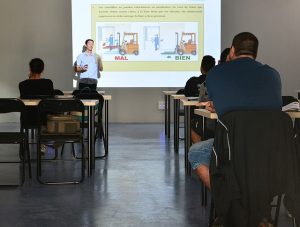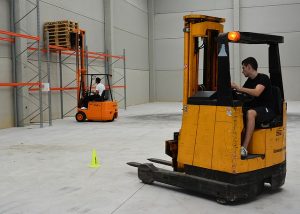 One of the most common dilemmas companies face when dealing with employee safety is training. Time is valuable, and many companies struggle to find the time to assemble employees and decide what topics to present.
One of the most common dilemmas companies face when dealing with employee safety is training. Time is valuable, and many companies struggle to find the time to assemble employees and decide what topics to present.
As a loss control consultant, some of the most frequently asked questions I receive relate to safety training. In order to protect our human and financial resources, we need to provide a certain amount of training to ensure that workplace hazards, safety guidelines and our overall safety vision is being communicated effectively.
And let’s not forget about satisfying our regulatory obligations. State and federal agencies such as OSHA and MSHA have training requirements that must be met in order to maintain compliance and avoid costly violations in the event of an inspection.
So how do we implement a practical training program that educates employees and maintains compliance without draining the bottom line?
Decide Which Topics to Cover
First, determine which safety topics to cover with employees throughout the year. Base these topics on the kind of work employees perform and the workplace hazards they face, such as working from heights, safe equipment operation, and avoiding exposure to hazardous materials. Emergency preparation measures such as CPR/first aid, fire extinguishers, and preparation drills should also be taken into consideration.
Another tool to help identify which safety topics to focus on is an injury data report from your loss runs (KEMI makes these available to our registered users on KEMI.com) or your organization’s OSHA 300 logs. These reports may provide a clearer picture of what areas need improvement and where training time can be most effectively spent.
An effective training program will consist of both the required compliance-based topics and the awareness level topics, which are not required by law but are no less important. Awareness level topics include items such as heat stress, tool safety, back safety, electrical awareness, and fall prevention, while compliance-based standards include hazard communication, bloodborne pathogens, personal protective equipment (PPE), and fall protection. Regulatory compliance standards vary based on the industry, and certain OSHA standards, such as Lock Out/Tag Out (LOTO) call for different levels of training dependent upon the responsibility of the employees involved. It is always a good idea to get the opinion of a safety professional, such as a loss control consultant or a member of OSHA’s education and training division, when determining regulatory training needs.
Determine the Training Frequency
 Once the training need has been identified, the next objective is to determine when and how often to provide training. It is important to note that many of these topics can be covered in a short period of time with minimal preparation. Many companies are successful with short 10-15 minute meetings on a weekly or monthly basis accompanied by a monthly or quarterly training session to cover the more complex topics.
Once the training need has been identified, the next objective is to determine when and how often to provide training. It is important to note that many of these topics can be covered in a short period of time with minimal preparation. Many companies are successful with short 10-15 minute meetings on a weekly or monthly basis accompanied by a monthly or quarterly training session to cover the more complex topics.
Companies that struggle to assemble all their employees in one location may elect to conduct the more complex training seminars one or two days a year, but the best practice is to continue providing frequent awareness messages through emails, newsletters, and safety flyers throughout the year. Regardless of the delivery method, frequent awareness messages foster a culture of safety by keeping the topic on the minds of employees.
Another important consideration when developing your training schedule should be how to handle educating new hires on your company’s safety expectations. Here at KEMI, safety training is a part of the initial orientation process whenever we hire new employees, and we have an annual review of our overall safety program while also providing regular safety reminders to employees on our internal website. One of the most common recommendations I have for companies is to develop a new hire checklist that documents specific items new employees should be trained on when they are hired.
Keep Track of Your Progress
Last but not least, it is crucially important to document all your organization’s safety training activities regardless of how complex or simple they may be. This documentation should include the topic, trainer, date, and signatures of those in attendance (click here to access our free safety training sign-in sheet). Good record keeping is not only beneficial in the event of an OSHA inspection, but it may also be shared with your insurance provider to demonstrate your organization’s commitment to keeping your employees safe.
KEMI is committed to promoting safer workplaces throughout Kentucky. We offer an extensive collection of free safety resources at www.worksafeky.com and we also provide free onsite training opportunities to our policyholder covering a wide range of topics. Assistance is also available through KYOSHA’s education and training division here.
If you have any safety questions or concerns, the KEMI Loss Education & Safety team is happy to help. Simply email us at safety@kemi.com or give us a call at 859-425-7800.

